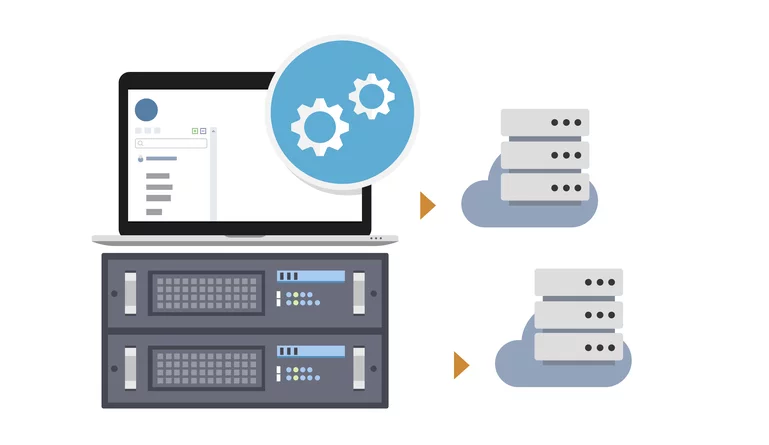A virtual machine monitor, also known as VMM is called a hypervisor. It is nothing but a type of virtualization software that helps in creating new virtual machines (VMs), ensuring that a computer’s hardware is separated from its software. The job of a hypervisor is to translate the request between physical and virtual resources, thereby ensuring the completion of the virtualization task. A hypervisor is called a bare-metal hypervisor when it is installed on the hardware of a physical machine, and it sits between the operating system and the hardware.
In some cases, the bare metal hypervisors are directly embedded into the machine’s core hardware, and it sits with the motherboard BIOS (basic input/output system). This is done in a few systems to enable the operating system on the machine so that the virtualization software can be accessed and used.
Since the bare metal hypervisor separates the operating system from its underlying hardware, there is no dependency on the hardware devices or drivers to run the software. What this means is that bare-metal hypervisors allow the operating systems and all their affiliated applications to function on different types of hardware devices.
This means that multiple operating systems and virtual machines can be hosted on the same physical server, which serves as the host machine. Since virtual machines are totally independent of the physical machines, these VMs can move from machine to machine or from one platform to another.
Workloads, networking, storage, memory can be shifted from across these machines or platforms or even across multiple servers, as per the requirement. For instance, if an application needs more power for processing, it can easily access additional machines using the virtualization software. The immediate impact of this is better cost and energy efficiency and improved performance, as only a few machines are used.
What is bare metal?
The term bare metal is used because there is technically no operating system between the hardware device and the operating system. The virtualization software practically is on the hard disk or “bare metal” of the hardware component. This is usually the place where the application is actually installed.
The hypervisor is not the only thing that is used as a reference point to define bare metal. Even in the case of servers we see a bare-metal hypervisor, which is nothing but a single-tenant regular server. However, by adding hypervisors and virtualization software this server can be converted into a host machine. A bare metal could also mean that actual servers are rented by customers. These servers host the public cloud of a cloud service provider over and above the public cloud services.
Bare metal hypervisors vs hosted hypervisors
A bare-metal hypervisor is a very commonly deployed hypervisor. This is the case where the virtualization software is installed directly on the hardware device, where we normally see the operating system is installed. These types of hypervisors are very secure because they work in isolation, completely separated from the operating system, which is prone to cyberattacks. From a performance point of view, these hypervisors are far more efficient compared to the hosted hypervisors, which is why most organizations choose bare-metal hypervisors when it comes to data center computing requirements.
Unlike the bare metal hypervisors, hosted hypervisors run inside the operating system of the host server or machine. Even though these hypervisors run inside the OS, more applications can be installed in the OS on top of the hypervisors. However, when it comes to performance, hosted hypervisors have more latency compared to a bare-metal hypervisor. This is because any request between hardware and the hypervisor must pass through the additional layer of the operating system.
If the processing speed of both hosted and bare-metal hypervisors are to be enhanced, this can be done by implementing hardware acceleration technology.
Hypervisor vs bare-metal virtualization
A bare-metal server is nothing but a dedicated server that houses a single tenant and is controlled by a single client. To have bare-metal virtualization, the client can still go ahead and install a bare-metal hypervisor directly on the hardware to enable the virtualization technology. This virtualization technology comprises virtual applications, multiple VMs, or private cloud instances.
On the contrary, hosted hypervisors are installed on top of the operating system and not on the bare metal of the server. Both types of hypervisors can run multiple virtual servers or host multiple tenants on a single physical machine.
Public cloud service providers take the server space on lease and give it out to multiple organizations depending upon the workload. So, a single server can host multiple virtual machines that are running various workloads of different companies.
A bare-metal server will always provide better performance compared to a virtual server because a single organization has full control over the bare metal server. Organizations also have better control over the hardware of the bare-metal hypervisor, and they can further optimize it to enhance performance. If resources are to be shared, then it can pose a threat compared to a dedicated bare-metal server. Since bare metal servers do not share resources, they are used to host private clouds from various cloud service providers.
Final Thoughts
However, hypervisors who are hosting multiple virtual machines do provide some benefits over bare metal servers, such as instant creation of virtual machines, and provide more resources, which is the requirement of multiple workloads that keep changing dynamically. Hypervisors also permit more utilization of physical servers, as and when required.
This is primarily because they can run multiple VMs on a single physical server. Having multiple virtual machines on a single physical server can be more cost-effective and energy-efficient in comparison to multiple physical machines that remain underutilized for the same task.






